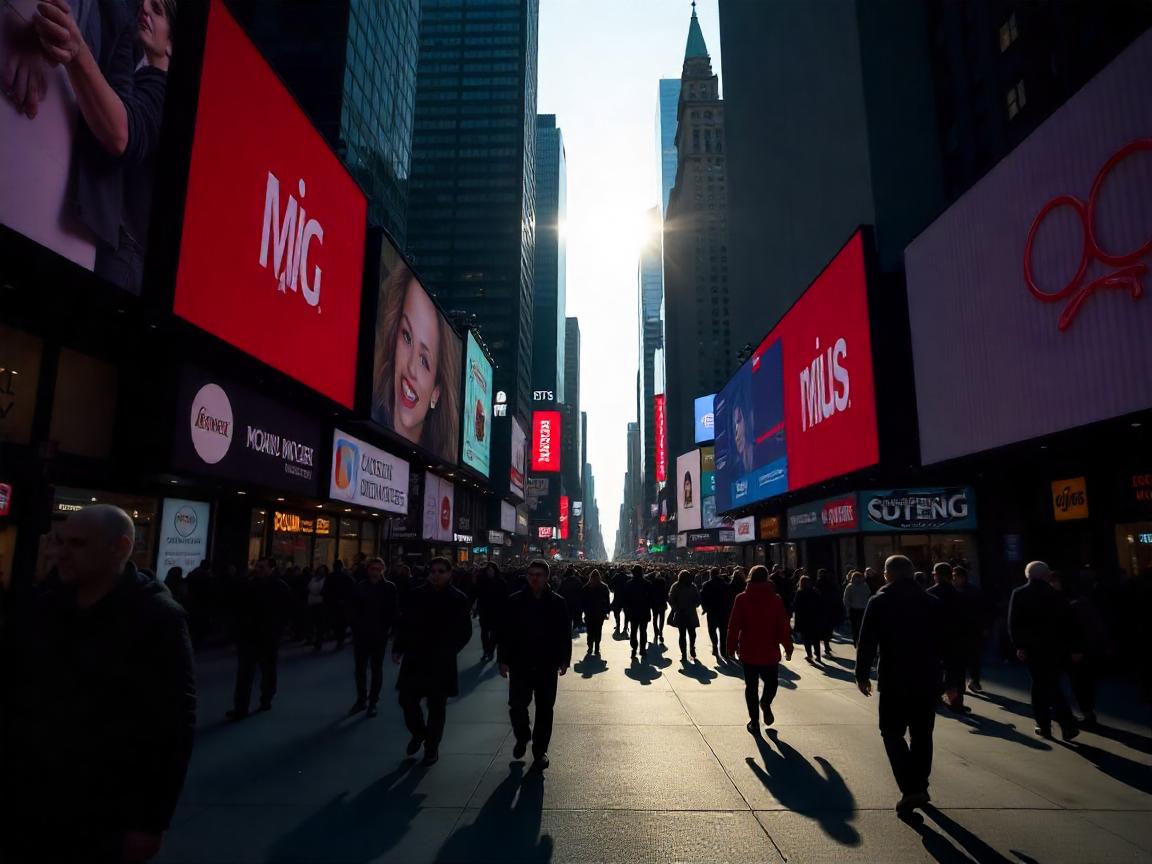Sunday, July 13, 2025
Across the dazzling skylines of New York City, San Francisco, Las Vegas, Los Angeles, Chicago, and Boston, hotel lobbies are quieter than expected, and tourism officials are crunching unsettling numbers. In the summer of 2025, these iconic American cities are facing a surprising slump: fewer hotel bookings and a marked drop in visitors from Canada, once one of their most reliable tourism markets.
Once bustling streets and crowded attractions now echo with uncertainty as economic, political, and cultural forces converge to reshape travel patterns. High costs, diplomatic tensions, and shifting traveler sentiments have Canadians rethinking trips south of the border, dealing a blow to cities that depend heavily on international tourism.
Advertisement
Advertisement
This isn’t just a hiccup in seasonal travel—it’s a complex challenge with ripple effects across local economies. Here’s the latest look at why Canada’s love affair with America’s great cities has hit a troubling pause.
America’s Tourism Slowdown in 2025: How Iconic Cities Are Grappling with Fewer Global Visitors
In 2025, America’s most celebrated cities are facing a quiet crisis. From the neon glow of Las Vegas to the towering skyline of New York City, places that once hummed with international chatter are finding their streets and hotel lobbies noticeably emptier. A wave of fewer global visitors is sweeping across the nation, leaving tourism leaders grappling with a reality they hadn’t anticipated so soon after the pandemic’s upheaval. High costs, political tensions, and shifting travel preferences are reshaping how—and where—people choose to explore. For cities whose identities and economies are deeply intertwined with foreign tourism, the stakes are high. The drop in global travelers isn’t just about empty seats on flights; it threatens jobs, businesses, and the cultural vibrancy that makes these urban centers sparkle. Here’s how America’s iconic destinations are navigating the challenges of a tourism slowdown in a world that’s suddenly looking elsewhere.
A Summer of Empty Hotel Rooms and Quiet Streets
In the summer of 2025, America’s most iconic cities find themselves facing an uncomfortable reality: the tourists simply aren’t coming in the numbers they used to. San Francisco, Las Vegas, New York City, Chicago, Miami, Boston — names that once evoked bustling sidewalks, packed restaurants, and hotel lobbies humming in a dozen languages — are reporting sharp declines in international leisure travel.
Industry experts describe the trend not as a mere seasonal blip, but as the continuation of a complex downturn rooted in politics, economics, and shifting global sentiment. For cities whose economies rely heavily on foreign visitors, this slump is more than a tourist problem — it’s an economic shockwave.
A National Picture: Billions Left on the Table
The numbers tell a sobering story. In 2024, international visitors spent roughly $181 billion in the United States. This year, that figure is forecast to drop below $169 billion, a loss exceeding $12 billion. Travel and tourism groups are ringing alarm bells, warning that the decline could cost hundreds of thousands of jobs in hotels, restaurants, attractions, and transportation services.
International arrivals have fallen by roughly 3.3% in the first quarter of 2025 alone compared to the previous year. And the drop is sharper from key markets: European travelers are down between 17% and 28%. Canadians — once the most dependable foreign visitors to many U.S. cities — have cut back by as much as 40%, depending on region. Mexicans and South Koreans have also scaled back their visits significantly.
For a country that once stood as the world’s most popular tourism destination, the loss isn’t just financial — it’s symbolic.

San Francisco: Planes Are Full, But Hotels Aren’t
San Francisco might be the poster child for this paradox. San Francisco International Airport (SFO) has roared back to life, with international passenger volumes running about 10% higher than in 2019. The terminals are full of travelers from Europe, Asia, and Latin America.
But a significant chunk of those travelers isn’t staying in the city. Instead, many are transferring to other destinations, heading directly to Silicon Valley, or limiting their San Francisco visits to quick business stops. City tourism officials report that international leisure visits are actually down about 5% compared to last year.
San Francisco’s iconic attractions remain as magnetic as ever. The Golden Gate Bridge glows red over the bay, the cable cars still rattle over steep hills, and the city’s cultural offerings rival any in the world. Yet foreign visitors appear hesitant, citing concerns over high prices, urban conditions, and the general cost of American travel.
Las Vegas: Glitz Meets Sticker Shock
Las Vegas, a city built on spectacle and indulgence, is also reporting a downturn in international tourism. Leisure visits have slipped between 6.5% and 7.8% this year, and international arrivals have dropped around 9%.
The reasons, locals say, are painfully clear. Prices have shot through the roof. Reports of $33 bagels, $26 bottles of water, and triple-digit resort fees are sparking social media outrage. Canadian visitors — historically a crucial market for Vegas — have decreased by roughly 22% to 40%, depending on the season.
“It’s not that people don’t love Vegas anymore,” said one Strip hotel manager. “They’re just balking at how expensive it’s become. People want to feel they’re getting value for their money, and right now, they don’t.”

New York City: A Shrinking Global Audience
New York City has long been America’s global stage. But in 2025, that stage feels a little emptier. The city expects to lose 3.5 million international visitors this year, a drop of about 17%.
Cultural institutions are feeling the hit. At the Metropolitan Opera, foreign ticket buyers, once 20% of the audience, now account for only 11%. Broadway is also reporting lighter crowds from Europe and Asia.
The financial cost is staggering. New York City anticipates losing nearly $4 billion in tourism spending. Hotels, restaurants, and attractions are tightening budgets, while tourism officials scramble to launch marketing campaigns aimed at restoring the city’s global reputation.
Los Angeles and California: Natural Beauty, Natural Disasters
California’s challenges are a microcosm of the national trend. Statewide, international tourism has declined by roughly 9.2%. Los Angeles has suffered particularly sharp drops — forecasts suggest a 25% to 30% decline in foreign visitors this year.
Part of the issue is perception. Wildfire seasons and news footage of smoky skies have spooked travelers, particularly from Asia. In addition, California remains one of the most expensive destinations in the country, with hotel prices continuing to climb.
Yet cities like Los Angeles and San Francisco are betting on business travel and major events — from tech conferences to the 2026 FIFA World Cup — to fill hotel rooms and restore international confidence.
Florida’s Struggle: Missing Canadians and Lost Revenue
Florida, America’s playground, has seen international visits fall by around 9% in 2025. The impact is especially pronounced among Canadian travelers, who once flocked to Miami, Fort Lauderdale, and Orlando in droves.
In Fort Lauderdale, officials estimate losses exceeding $600 million due to fewer Canadian visitors and reduced property investments from Canadian “snowbirds.” Airlines have responded by trimming flight schedules, adding further obstacles for potential tourists.
The political climate hasn’t helped. Tensions between U.S. leadership and Canadian officials have led to warnings against non-essential travel, further depressing demand.
Chicago and Boston: Steady Decline in Urban Getaways
Chicago and Boston may not attract the same sheer volume of tourists as New York or Las Vegas, but they’re still key pillars of American tourism. Both cities have reported declines in foreign visitors this year, driven by similar forces: expensive hotels, visa hassles, and shifting perceptions of America as a destination.
In Chicago, tourism officials are watching a significant drop in Canadian travelers, who once filled downtown hotels and shopped along Michigan Avenue. Boston, meanwhile, has been swept up in broader national trends, facing softer demand even during traditionally strong travel periods like spring and early summer.

A Chilly Welcome: Why U.S. Cities Are Losing Canadian Tourists in 2025
America’s Tourism Giants Face a Surprising Chill
In 2025, some of America’s brightest tourism stars—New York City, San Francisco, Las Vegas, Los Angeles, Chicago, and Boston—are finding themselves under unexpected clouds. Despite glitzy skylines, world-famous attractions, and bustling airports, these cities are seeing hotel bookings slide and visitor numbers dwindle. And nowhere is the drop more visible—or more economically worrying—than in the sharp decline of Canadian tourists.
Only a few years ago, Canadians were among the most reliable travelers to the United States, flocking south for Broadway shows, shopping sprees, beach escapes, and long weekends filled with iconic sights. Now, growing numbers are deciding to stay home—or head elsewhere.
Numbers Tell the Story: Canadians Staying Away
Consider New York City. The city has braced for a loss of up to 3.5 million international visitors this year, a large chunk of them Canadians. Tour operators report drops in Canadian bookings ranging from 5% to as much as 40%, depending on the travel segment. Some air arrivals from Canada are down roughly 30%, putting a dent in hotels, restaurants, and attractions that count on international visitors to balance the books.
In Las Vegas, where bright lights typically draw crowds from around the world, visitor numbers have dropped about 6.5% this year. Canadian travelers—who once packed casinos and shows—have decreased by 22% to 40%. Local businesses blame soaring prices for everything from bagels to resort fees, leaving travelers feeling they’re not getting their money’s worth.
Even California’s star cities aren’t immune. Los Angeles expects a 25–30% drop in foreign visitors overall, with significant losses from Canada. San Francisco, despite full airplanes arriving at its airport, reports a quieter tourism scene on the ground as Canadians bypass the city or shorten stays.
Chicago and Boston, while smaller on the international tourism scale, are also feeling the pinch. Canadian tourists who used to cross the border for shopping, sporting events, and cultural experiences are rethinking trips amid rising costs and geopolitical friction.

What’s Driving the Decline?
Several intertwined factors explain why Canada-to-U.S. tourism is hitting turbulence.
First is politics. Canadian sentiment toward the United States has cooled considerably in recent years. Tariffs, diplomatic tensions, and polarizing political rhetoric have all played a role. Surveys indicate that over 60% of Canadians are reconsidering or canceling trips as a subtle form of protest, choosing other destinations instead.
Second is price. The U.S. dollar remains strong, making American vacations more expensive for Canadians. Hotel rates in major cities like New York and San Francisco have risen steadily, pushing nightly averages well above $230 in some areas. Visitors accustomed to spending in Canadian dollars are finding those dollars stretched thin.
Third, perception matters. Stories about border hassles, potential detentions, and a less-than-welcoming tone from American politics have combined to create anxiety. For many Canadians, the idea of relaxing in Europe, Mexico, or the Caribbean feels simpler and safer right now.
The Economic Ripple Effect
This isn’t just a tourism problem—it’s an economic one. Canadian visitors pump billions into American cities each year. The U.S. Travel Association warns that a 10% drop in Canadian travel could mean $2.1 billion in lost spending and over 14,000 potential job cuts.
For New York City, already under pressure from softer international demand, the Canadian shortfall could help contribute to a staggering $4 billion in lost tourism revenue. In Florida, Fort Lauderdale alone expects a $600 million loss tied to missing Canadian snowbirds and property investors.
Hotels are particularly vulnerable. Industry data shows bookings sliding across summer and fall, forcing some operators to consider discounts and promotions to fill rooms.
Cities Fight Back with New Strategies
Despite the gloomy headlines, American cities aren’t standing still. Tourism boards in places like New York and San Francisco are ramping up marketing campaigns to reassure international visitors that they’re welcome. Cities are highlighting cultural festivals, sports events, and new attractions in hopes of wooing Canadians back.
Airlines and hotel groups are also stepping up with price promotions and loyalty perks aimed at softening the financial sting for Canadian travelers. Some regions, like Massachusetts and Maine, are publicly appealing to Canadians, emphasizing shared history and cross-border ties.
But whether these efforts will reverse the trend remains an open question. Rebuilding trust and enthusiasm may take time—and even more so if political tensions remain high.
A Long Road Ahead
America’s urban tourism scene is at a crossroads. The architecture, food, entertainment, and natural wonders remain as magnetic as ever. The Golden Gate still glows at sunset, Broadway lights still dazzle, and Las Vegas still promises thrills around every corner.
Yet for cities like New York, San Francisco, Las Vegas, and others, winning back Canadian tourists—and international visitors more broadly—will require more than just marketing slogans. It will demand competitive pricing, smoother travel experiences, and a genuine spirit of welcome.
As one Las Vegas hotel manager put it: “People want to feel good about where they’re spending their money. Right now, that’s not always the United States.”
Time will tell whether American cities can turn the tide—or whether this drop marks a longer-term shift in how the world chooses to travel.
The Perfect Storm: Why Travelers Are Staying Away
Why is this happening? Analysts point to a few converging factors:
- Geopolitics and Policy: Foreign travelers cite toughened visa processes, political rhetoric, and unpredictable border rules as reasons to avoid the U.S. altogether.
- High Costs: The strong dollar has made trips to America far more expensive for many foreigners. Rising hotel rates, restaurant prices, and entertainment fees add to the sticker shock.
- Perception Problems: International media coverage of American urban issues, safety concerns, and political polarization has left some tourists wary.
This mix has pushed many travelers to choose alternative destinations in Europe, Asia, or closer to home, where they perceive fewer headaches and better value.
A Path to Recovery — But When?
Can America’s cities turn things around? Industry leaders are cautiously optimistic, predicting a full recovery of international tourism by 2028 or 2029. Cities are pouring money into marketing campaigns, focusing on major events, and lobbying for policy changes to make travel smoother.
San Francisco is leaning heavily on its convention calendar. New York City is banking on Broadway’s global pull. Las Vegas is exploring pricing strategies to lure back value-focused tourists. Florida hopes to win back Canadian snowbirds with tailored promotions and diplomatic efforts.
Yet the reality is that tourism operates on trust — and trust, once shaken, can take years to rebuild.
America Still Shines — If Visitors Return
Despite the challenges, the allure of America remains powerful. The Golden Gate Bridge still rises through the fog. The lights of Times Square still dazzle. The beaches of Miami still gleam under the sun.
For global travelers, the question is not whether America is worth visiting, but whether the experience feels accessible, affordable, and welcoming. And for America’s cities, the mission now is to ensure that answer remains a resounding yes.
The story of America’s tourism slump in 2025 isn’t simply about numbers. It’s about a country wrestling with how it shows itself to the world — and whether the world still wants to come see it.
Advertisement
Tags: America Travel News, Chicago, Decline of Canadian Tourists, Las Vegas, Los Angeles, Lower Hotel Bookings, New York City, San Francisco, US Tourism News
Advertisement
Tags: America Travel News, Chicago, Decline of Canadian Tourists, Las Vegas, Los Angeles, Lower Hotel Bookings, New York City, San Francisco, US Tourism News
I want to receive travel news and trade event update from Travel And Tour World. I have read Travel And Tour World’sPrivacy Notice.
Saturday, July 12, 2025
Saturday, July 12, 2025
Sunday, July 13, 2025
Saturday, July 12, 2025
Saturday, July 12, 2025
Saturday, July 12, 2025
Saturday, July 12, 2025
Saturday, July 12, 2025




